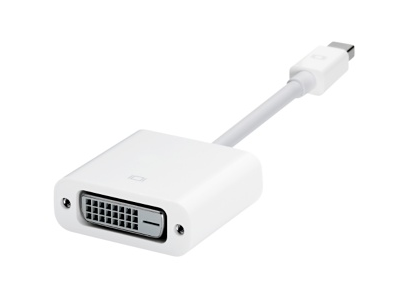On Apple monitor pricing


While Apple may simply stop selling 20-inch displays (which wouldn't be that surprising) many will view the move as a harbinger of things to come. Specifically that Apple will soon launch a new, LED-backlit 20-incher with a MiniDisplay Port, built-in iSight camera, mic and speakers, like the 24-inch, $899 model it announced in October 2008.
Personally, I'm over Apple's overpriced monitors (and adapters). While they may have high contrast ratios, color gamuts, yadda. I don't think too many people (save the high-end pros) who will pay 4x to have an Apple logo on their monitor, especially in this economy.
Rant: I'm outright incensed that Apple doesn't include a Mini DisplayPort to DVI adapter (pictured) with new Macs (like the MBP). After all, you need that dongle to connect to a monitor. Instead Apple sees fit to charge $30 for the damned thing. $30! What's worse, if you also need to connect to a VGA monitor (or projector, or whatever) you'll need another $30 adapter for that thankyouverymuch. That's $60 in adapters. For another $40 you can buy a 17-inch monitor.
Anyway, I digress.
The 30-inch display is still on the Apple price list – for a whopping $1,800. If Apple expects to sell more than 100 monitors they need to come out with a value line without all the bells and whistles or simply cede the monitor market to the bottom feeders.